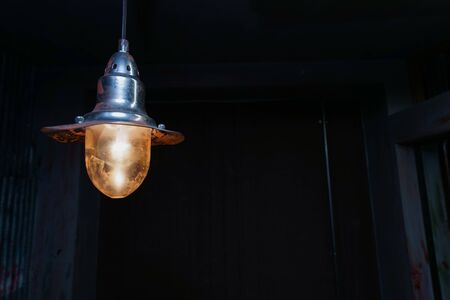Understanding Weatherproof vs. Waterproof
When it comes to outdoor lighting, knowing the difference between “weatherproof” and “waterproof” is essential. These terms aren’t just marketing jargon—they directly impact how your lighting will perform and last in the elements. Weatherproof lighting is designed to withstand a range of outdoor conditions like rain, dust, and fluctuating temperatures, but it may not survive direct or prolonged water exposure. On the other hand, waterproof lighting can handle direct contact with water, such as heavy rain or even submersion, making it a safer bet for areas prone to wet conditions. Getting clear on these definitions ensures you pick fixtures that truly match your space and climate, helping you avoid premature wear and costly replacements. In short: understanding these labels sets the foundation for smarter, longer-lasting outdoor lighting choices.
2. Key Materials for All-Weather Lighting
When it comes to outdoor lighting that truly lasts, material selection is everything. To withstand the unpredictable American climate—think heavy rain in Seattle, blazing sun in Phoenix, or snowstorms in Chicago—you need fixtures built from the toughest materials. Here’s a closer look at the top choices:
| Material | Main Benefits | Best For |
|---|---|---|
| Stainless Steel | Rust-resistant, modern look, strong against humidity and rain. | Coastal areas, contemporary homes. |
| Powder-Coated Aluminum | Lightweight, corrosion-resistant, holds color well in sun. | All climates, especially sunny or wet regions. |
| Polycarbonate (High-Grade Plastic) | Impact-resistant, won’t crack in freezing temps, UV stable. | Cold climates, spaces with kids or pets. |
| Copper & Brass | Develops a stylish patina over time, highly durable, naturally weatherproof. | Luxury landscapes, classic or rustic styles. |
| Tempered Glass | Resists shattering, keeps its clarity through seasons. | Decorative fixtures, exposed bulbs. |
Design Tip: Always check for UL Wet Location ratings to ensure your fixture is certified for true all-weather use. This label means the light can handle direct exposure to water and extreme temperatures—no worries about safety or longevity.
The right materials don’t just protect your investment; they keep your outdoor space looking sharp season after season. Whether you crave a sleek modern vibe or timeless charm, choose finishes that age gracefully and stand up to whatever Mother Nature throws your way.

3. IP Ratings: What They Actually Tell You
Let’s decode the language of outdoor lighting—IP ratings. “IP” stands for Ingress Protection, and it’s the key to understanding how well your fixtures handle water, dust, and the unpredictable outdoors. Every IP rating has two numbers. The first digit (ranging from 0 to 6) rates protection against solid objects like dust or dirt; the second digit (0 to 8) measures resistance to moisture, from a gentle drizzle to full immersion.
For example, an IP44 fixture is protected against most rain and splashing water—great for covered porches or patios. But if you’re lighting up a fully exposed backyard or pool area, look for IP65 or higher. That means your lights are sealed tight against both dust and strong jets of water. Want even more peace of mind? IP67 and IP68 mean your fixtures can withstand temporary or continuous submersion—perfect for landscape accents or poolside vibes.
In short: don’t just trust claims like “waterproof.” Always check the IP rating. It’s your real-world guide to durability—and the difference between lighting that lasts and a rainy-day letdown.
Installation Best Practices
Proper installation is key to ensuring your waterproof and weatherproof outdoor lighting stands up to the elements and performs year-round. Smart placement not only enhances safety and aesthetics but also extends the life of your fixtures. Here’s what you need to know for a seamless setup.
Strategic Placement Tips
Begin by identifying areas that require illumination—think pathways, entryways, patios, and landscape highlights. Place lights where they offer maximum visibility without causing glare or light pollution. Avoid direct exposure to sprinklers or pooling water to prevent unnecessary wear.
Mounting Matters
Choose the right mounting method for each type of fixture. Use sturdy brackets or ground stakes rated for outdoor use. Ensure all hardware is rust-resistant. For wall-mounted lights, seal around fixtures with waterproof caulking to block moisture intrusion.
Wiring Safety Checklist
| Step | What to Do |
|---|---|
| Use Outdoor-Rated Cables | Select cables labeled for exterior use and UV resistance. |
| Bury Wiring Properly | Install underground cables at least 18 inches deep or use conduit for surface wiring. |
| Seal All Connections | Apply waterproof connectors or gel-filled wire nuts at every junction. |
| Test GFCI Outlets | Ensure all outlets are Ground Fault Circuit Interrupter (GFCI) protected. |
Seasonal Maintenance Reminders
Regularly check fixtures for damage, clean lenses, and tighten any loose hardware. Replace bulbs with energy-efficient options as needed. After storms or harsh weather, inspect all installations to maintain performance and safety.
5. Maintenance for Maximum Lifespan
Keep It Simple: Routine Cleaning
Maintaining your waterproof and weatherproof outdoor lighting doesn’t have to be complicated. Start by turning off the power, then wipe down fixtures with a damp microfiber cloth to remove dirt, pollen, and grime. For stubborn spots, use mild soap and water—avoid harsh chemicals that can damage seals or finishes.
Inspect Regularly for Wear
Seasonal inspection is key. Check all seals, gaskets, and connections for cracks or moisture intrusion. Replace any worn parts immediately to prevent long-term issues. Make sure screws are tight and mounting brackets are secure after windy or stormy conditions.
Care for Electrical Components
Outdoor conditions can be tough on wiring. Look for frayed wires or corrosion at connection points. If you notice anything unusual, consult an electrician familiar with U.S. safety standards. Always use UL-listed replacements to keep everything up to code.
Pro Tip: Mind Your Bulbs
Choose bulbs rated specifically for outdoor use. LED bulbs last longer and handle temperature swings better than traditional options. Replace burned-out bulbs promptly to avoid overloading other components.
Year-Round Performance Starts With You
Consistent care ensures your outdoor lighting not only survives but thrives, season after season. With a little attention, your fixtures will keep shining bright through rain, snow, or summer sun—just as they were designed to do.
6. Style Inspiration for Every Outdoor Space
Modern Design, Unmatched Durability
Today’s waterproof and weatherproof outdoor lighting is where cutting-edge design meets everyday function. Think sleek lines, minimalist forms, and finishes that complement any exterior—from urban patios to spacious backyards. These fixtures aren’t just about looks; they’re engineered to stand up to rain, heat, and all the unpredictable elements that come with American outdoor living.
Curate Your Perfect Atmosphere
Imagine soft pathway lights guiding guests to your front porch or statement pendant lamps transforming your covered patio into an alfresco lounge. With so many options—matte black sconces, brushed steel bollards, warm LED string lights—you can personalize every space while ensuring safety and visibility year-round.
Seamless Integration, Effortless Maintenance
American homeowners love solutions that blend style with simplicity. The latest weather-resistant lighting is easy to install and built for low maintenance, so you spend more time enjoying your space and less time worrying about repairs. Whether your taste leans farmhouse chic or ultra-modern, there’s a weatherproof fixture ready to elevate your outdoors in both performance and design.

